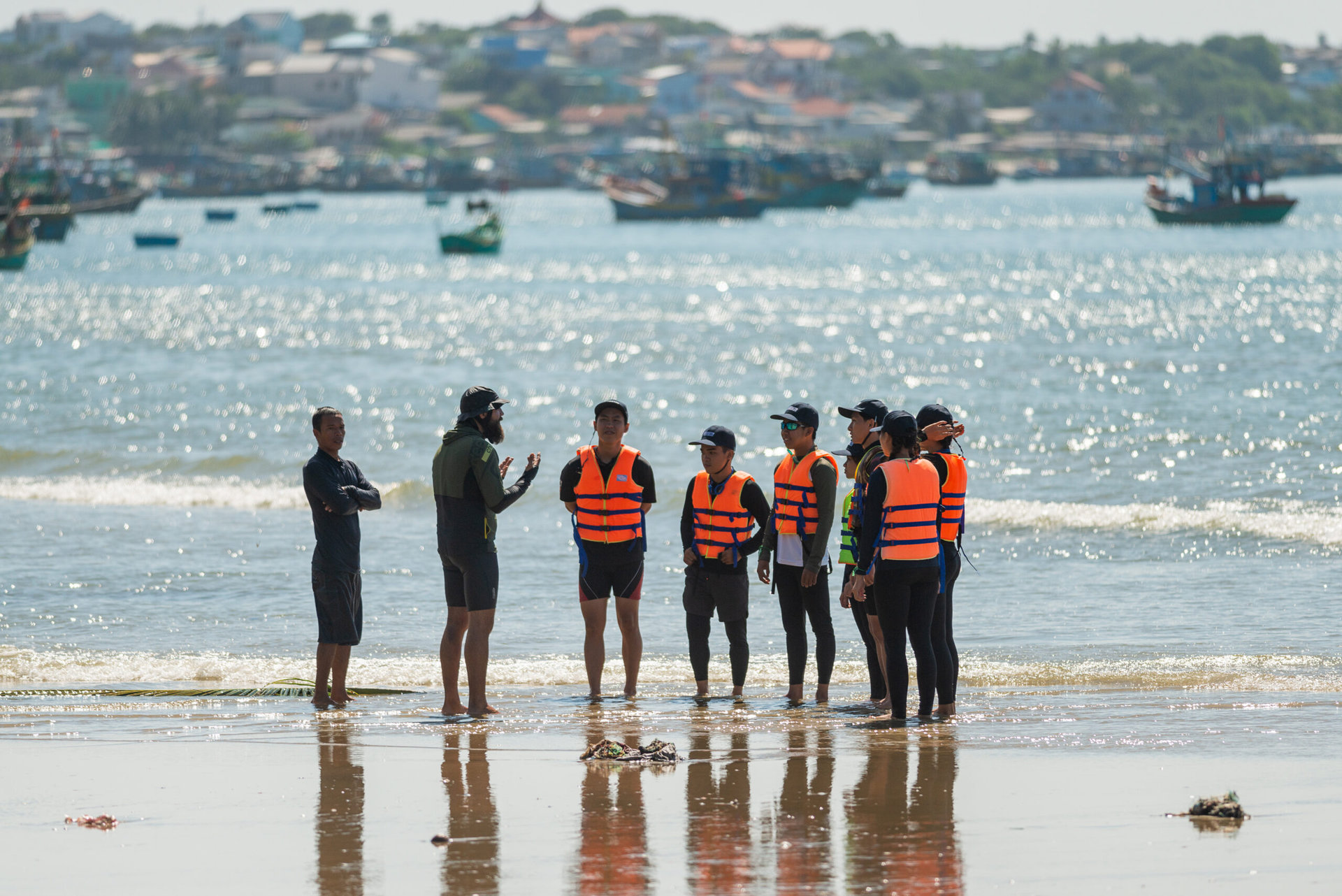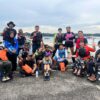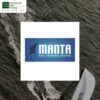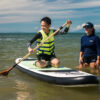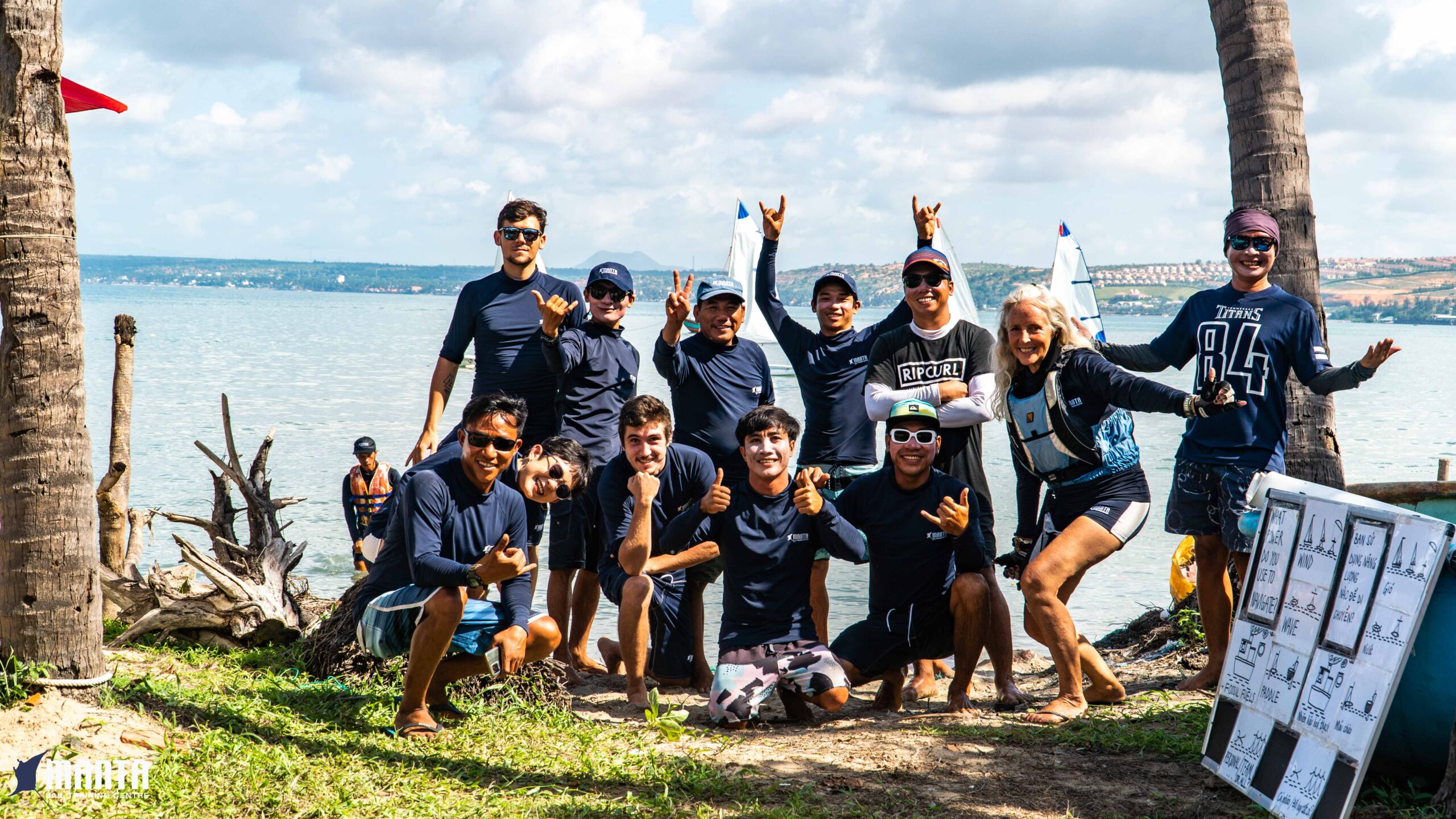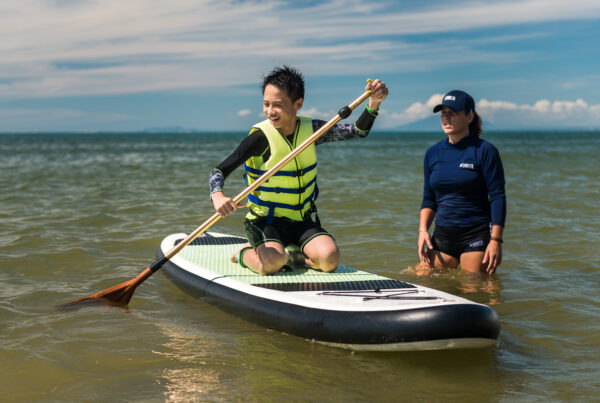Mui Ne beach is famous for its white sand dunes, lakes, and even swamps right in the middle of sandy terrain. This makes it a perfect place to enjoy a wide range of watersports. Keep reading to find out why Mui Ne is the capital of watersports.
Overview of Viet Nam advantages
Vietnam’s coastline stretches for an incredible 3,500 kilometers, making it a top destination for beach lovers from all over the world. This coastline gives Vietnam many advantages, including: easy access to the sea for trade and transportation, a variety of climates and landscapes supporting diverse plant and animal life, and beautiful beaches that attract tourists from all over the world.
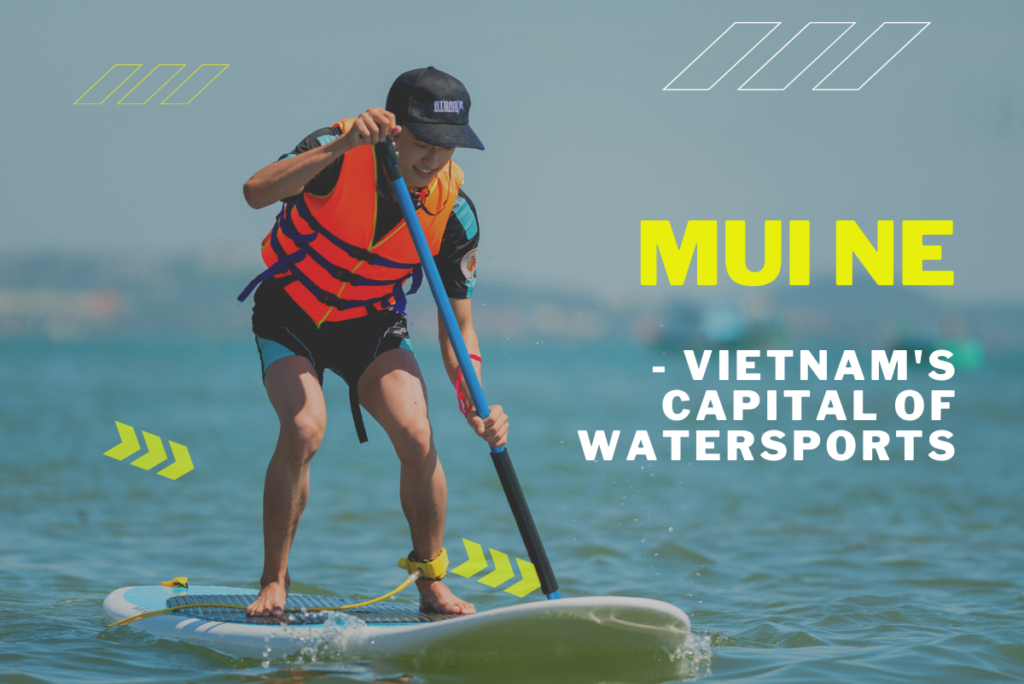
Vietnam’s climate is great for watersports all year round, since the average temperature is 27-28 degrees Celsius, and the water temperature is 24-25 degrees Celsius. This makes it the perfect place to enjoy a wide range of watersports.
Many people who love watersports and want to get away from winter – (from November to February in the northern hemisphere, June to August in the southern hemisphere), find watersports in Vietnam preferable. Vietnam can feel like a holiday for watersports soaking up the sun, without getting cold, and with a great range of wind and waves for watersports.
Watersports in Vietnam are very affordable, which is due to the low cost of living in Vietnam. Coaches can afford to take a lower coaching salary than in some countries outside Vietnam. The services in Vietnam would be more affordable without the cost of new equipment and (20+%) higher import taxes than outside Vietnam.

Mui Ne’s unique features as the capital of watersports
Mui Ne is a coastal fishing village in Vietnam’s south-central Binh Thuan Province. The town is a ward of the city of Phan Thiết, which contains approximately 25,000 residents in total. Mui Ne is a global watersports hotspot, thanks to the sand dunes which create ideal anabatic winds for watersports. The dunes heat up with sunshine, and the hot air rises which brings in cool sea breezes.
Differing from other beaches in the country, Mui Ne area has a great range of wind for watersports and has beaches with a gentle beach gradient without rocks, without a large beach break, and without a strong current. The wind is consistent (in El Nino years).
It is possible to source a range of low to medium to strong winds (5 knots to 25 knots) and it is suitable to source coastal sites without rocks. Sailing, beginner windsurfing, SUP, and wing foiling are best in calm areas. Surfing needs waves and kiteboarding the stronger winds (12-25 knots). The variability between the bays in the Mui Ne area works well. In one season with strong waves and wind, the next bay in contrast is sheltered with small waves or flat water. The fishing boats are a seasonal indicator of calm water, sheltered from the wind.
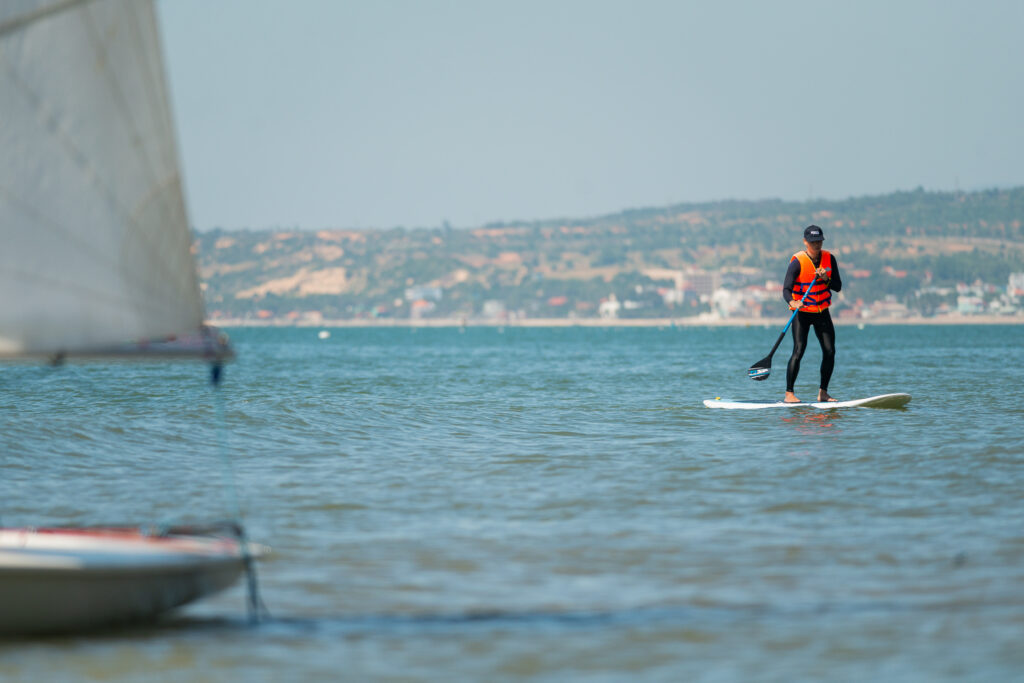
Located in Mui Ne beach, MANTA has a very gentle beach gradient without a corresponding beach break, and no rocks to navigate around for safety. MANTA is protected at 108 Huynh Thuc Khang in the northeast wind season (October-November to April-May) and moves to a southwest wind season satellite site (April-May to October-November). This is ideal for trying out thrilling experiences with watersports such as sailing, SUP, traditional coracling,… in both rental, lessons, and tours.
Enjoy watersports at Mui Ne beach
Mui Ne developed around the sea, the beach, and watersports – so people and the atmosphere tends to be relaxed, upbeat, and flowing (like water). It has been a multicultural bay which also adds to an interesting social environment and a global watersports hotspot. It has not yet been concreted over like a more frantic city yet. Therefore, this place tends to be very peaceful and friendly as many people living in Mui Ne for a long time, share a common love/passion for watersports.
Travelers who come to Mui Ne can try out up to 11-14 different types of watersports in total: Swimming, surfing and boogie boarding, kiteboarding, Stand Up Paddling, traditional coracles, windsurfing, and sailing. Foiling equipment (surf foils, wing foils, dinghy foils), has now become available which allows watersports to operate in lighter winds. Raft building, snorkeling, and freediving can also be counted (although in smaller numbers).
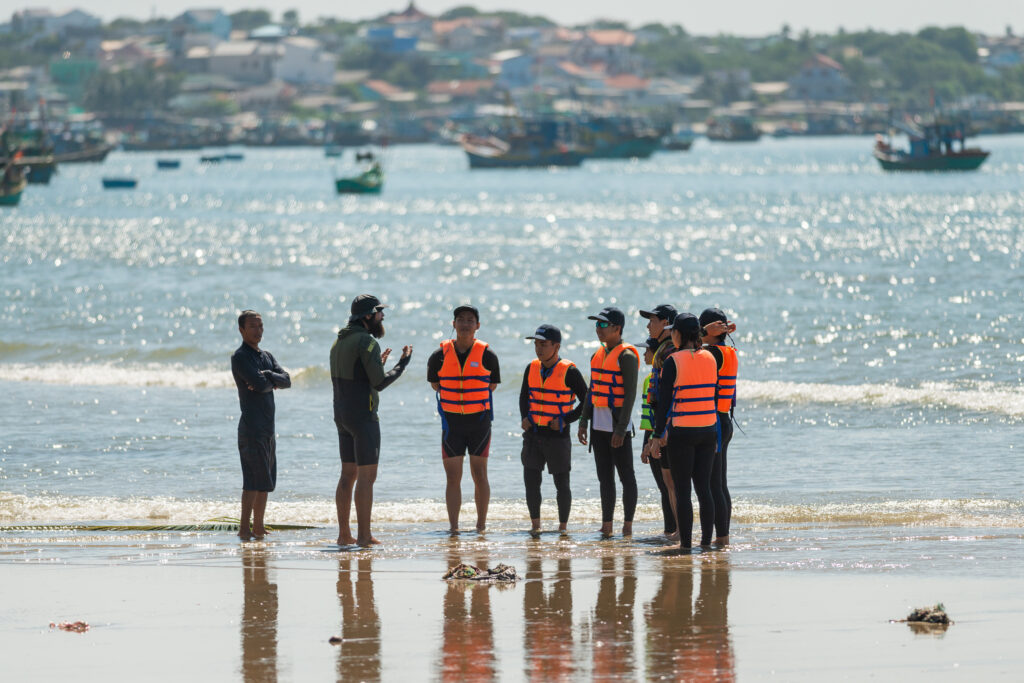
The cost of water sports varies greatly, depending on the characteristics of each sport and your needs. The range is about USD10 for renting a board (after gathering the skills to use the equipment safely), to USD75 for kiteboarding. The average price for lessons on boards and sails is approximately $40 – $75 for an hour.
People who want to participate in watersports should first choose a watersport to learn about, as each watersport is appropriate for different climates and audiences. Have a look on Facebook groups and Tripadvisor to see who is offering your sport, and follow up from there. Call or email to check availability and make an appointment for a session. At MANTA, emails make sense if it is busy at the beach.
With the aforementioned benefits, Mui Ne Beach is becoming the capital of water sports in Vietnam, attracting an increasing number of people to try out new experiences with watersports at reasonable prices and high-quality services.
If you wish to experience sailing in Vietnam, come to watersports services at MANTA – Vietnam’s 1st and only official sailing school right away!
***Photo by Elena Sergeevna
